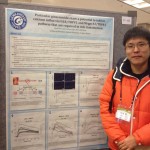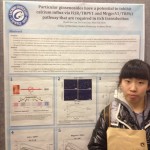Journal club 2012-11-30
TRPM8, but not TRPA1, is required for neural and behavioral responses to acute noxious cold temperatures and cold-mimetics in vivo.
Source
Neuroscience Graduate Program, Department of Biological Sciences, University of Southern California, Los Angeles, CA 90089, USA.
Abstract
Somatosensory neurons detect environmental stimuli, converting external cues into neural activity that is relayed first to second-order neurons in the spinal cord. The detection of cold is proposed to be mediated by the ion channels TRPM8 and TRPA1. However, there is significant debate regarding the role of each channel in cold-evoked pain, complicating their potential as drug targets for conditions such as cold allodynia and hyperalgesia. To address this debate, we generated mice lacking functional copies of both channels and examined behaviors and neural activity in response to painful cold and noxious cooling compounds. Whereas normal mice display a robust preference for warmth over cold, both TRPM8-null (TRPM8(-/-)) and TRPM8/TRPA1 double-knockout mice (DKO) display no preference until temperatures reach the extreme noxious range. Additionally, in contrast to wildtype mice that avoid touching cold surfaces, mice lacking TRPM8 channels display no such avoidance and explore noxious cold surfaces, even at 5 degrees C. Furthermore, nocifensive behaviors to the cold-mimetic icilin are absent in TRPM8(-/-) and DKO mice, but are retained in TRPA1-nulls (TRPA1(-/-)). Finally, neural activity, measured by expression of the immediate-early gene c-fos, evoked by hindpaw stimulation with noxious cold, menthol, or icilin is reduced in TRPM8(-/-) and DKO mice, but not in TRPA1(-/-) animals. Thus our results show that noxious cold signaling is exclusive to TRPM8, mediating neural and behavioral responses to cold and cold-mimetics, and that TRPA1 is not required for acute cold pain in mammals.
Copyright (c) 2010 International Association for the Study of Pain. Published by Elsevier B.V. All rights reserved.
Journal club 2012-11-30 Read More »


